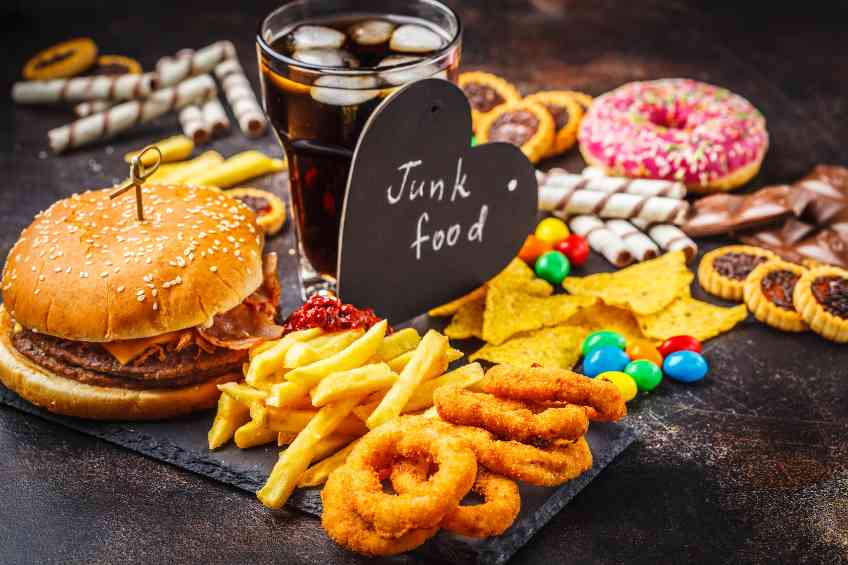By John Salak –
Junk food is everywhere and it’s harming if not killing people. And in case there is any doubt, the U.S. represents the most junk food-obsessed nation on Earth, according to eatpallet.com.
These sweet and salty, highly processed, low nutritional foods account for about 15 percent of all the calories consumed in the U.S. Depending on age, between a quarter to half of Americans eat these products daily and this consumption is leading to nationwide increases in obesity, cardiovascular disease, type 2 diabetes and even some cancers, among other problems.
Junk food’s health dangers have been well-recognized for years. What’s less apparent is how to deter people from gouging on these products. A team from New York University and Tufts University may have a solution: institute a junk food tax. The trick, among other issues, is coming up with a working definition of the category.
“There is a growing recognition that an unhealthy diet stems from overconsumption of what we colloquially refer to as ‘junk food,’ ” acknowledged Jennifer Pomeranz, assistant professor of public health policy and management at NYU School of Global Public Health and the first author of a related study. “However, public health efforts to address junk food are hindered by a lack of a uniform method to define junk food for policy purposes.”
One just policy would be a junk food tax that theoretically would not only discourage consumption by raising the cost of these products but would simultaneously generate revenue for other programs designed to improve the nutrition and health of communities in need.
Although these taxes have not been widely used in the U.S., the research team notes that previous research shows that taxes on junk food are administratively and legally feasible. Beyond this, other countries have successfully deployed these taxes. Hungary, for example, taxes unhealthy food that falls into certain categories and has elevated levels of nutrients, such as sugar and salt. These approaches have not only lowered junk food consumption but have also encouraged manufacturers to reformulate their products to make them healthier.
NYU’s team claims the groundwork for this tactic has already been laid in the U.S.
“People often say it would be too difficult to define ‘junk food’ for taxation or other policies. Our new results indicate numerous U.S. examples of existing policies that define junk food and identify the common threads between them,” noted the study’s senior author Dariush Mozaffarian, dean for policy at the Friedman School at Tufts.
The researchers gained a deeper understanding of how existing policies determine what constitutes junk food by evaluating policies where federal, state, or tribal governments defined categories of food for taxation or other related regulatory purposes. Not all policies targeted junk food, but the team identified and analyzed 47 laws and bills from 1991 through 2021, including one active junk food tax law implemented by the Navajo Nation, three state snack food sales taxes that were later repealed and numerous junk food tax bills that have not been enacted.
These policies used several criteria to define foods, including product categories (e.g., candy, chips), processing (e.g., added preservatives), place of preparation or sale (e.g., homemade, farmers market, vending machine), nutrients (e.g., levels of salt, saturated fat, sugar or calories) and serving size. Of the 47 policies, 26 used multiple criteria to define foods.
Two themes emerged from the research. Policies used categories of food products to help differentiate between necessary or staple foods and non-staple foods. For instance, bread was often excluded from junk or snack food policies, while sweets and chips were considered non-staple foods.
The second theme policies commonly added a combination of processing and/or nutrient criteria to further determine which products within food categories would be subject to or exempt from regulation.
The study supports the use of junk food taxes implemented as excise taxes paid by manufacturers or distributors, rather than sales taxes that need to be administered by retailers and paid directly by consumers. Revenue from excise taxes can be earmarked for particular uses, including improving access to healthy food in low-resource communities.
“An advantage of excise taxes is that food companies may be motivated to reformulate their products to be healthier to avoid taxation,” added study co-author Sean Cash of Tufts. “Defining foods to be taxed is not a static exercise, as existing products are reformulated and thousands of new packaged foods are introduced each year—so how we tax foods is not just a tool for steering consumers away from the least healthy options, but also for encouraging healthy innovations in what ends up on the supermarket shelves.”
While the benefits of taxing junk food may be substantial, the researchers did not address whether such taxes are politically feasible.










